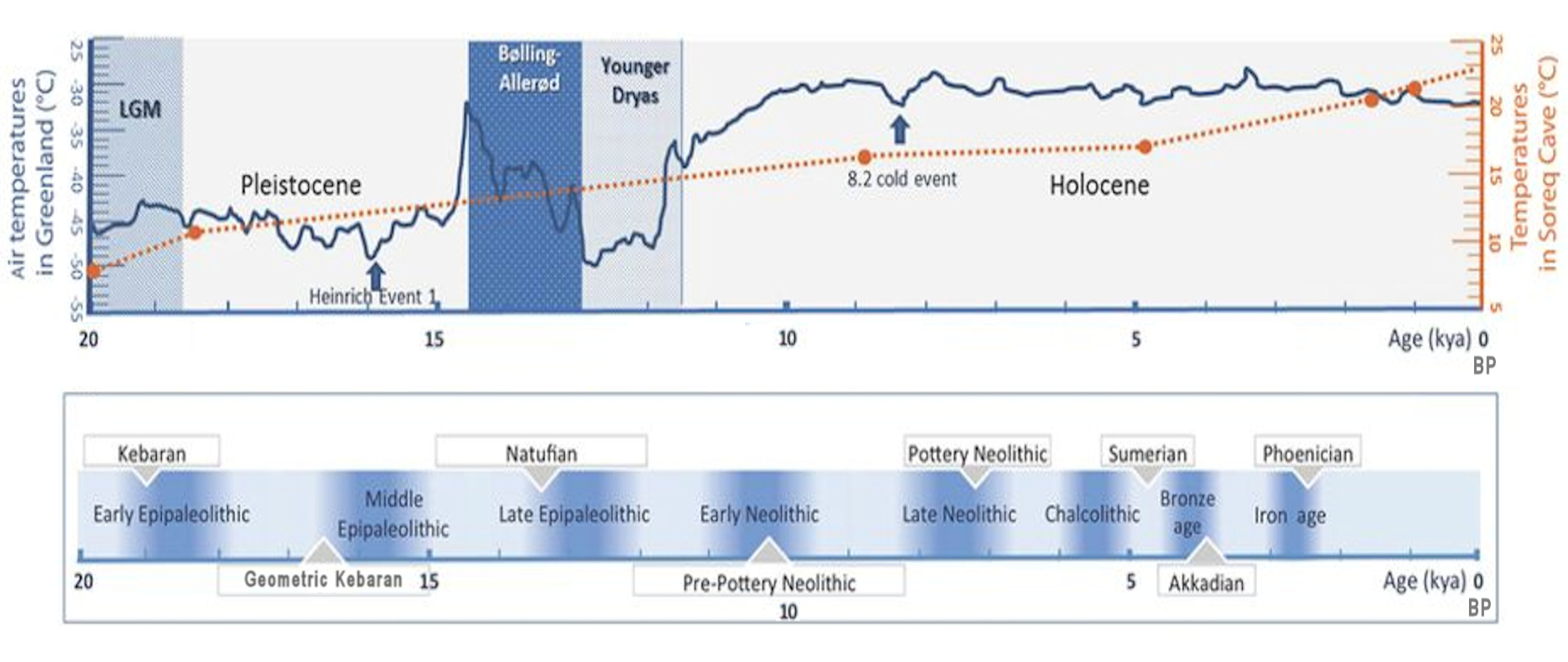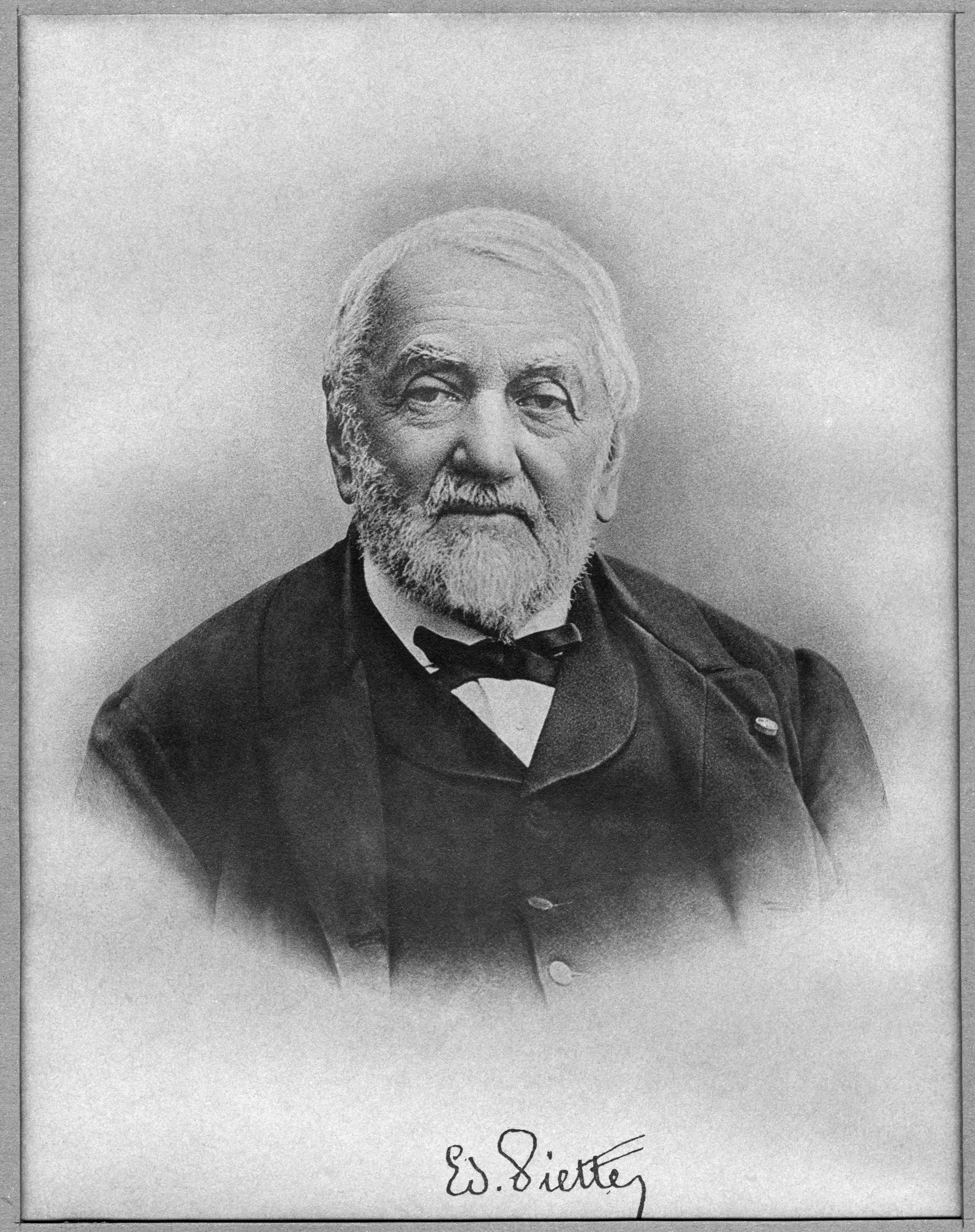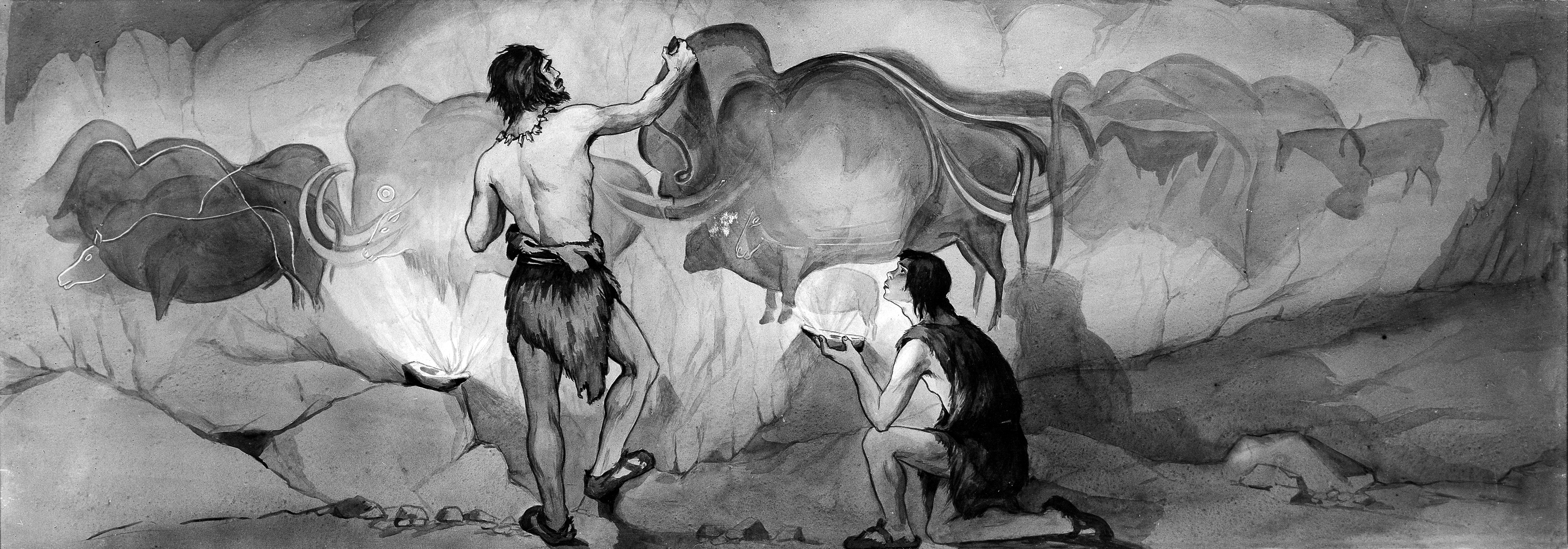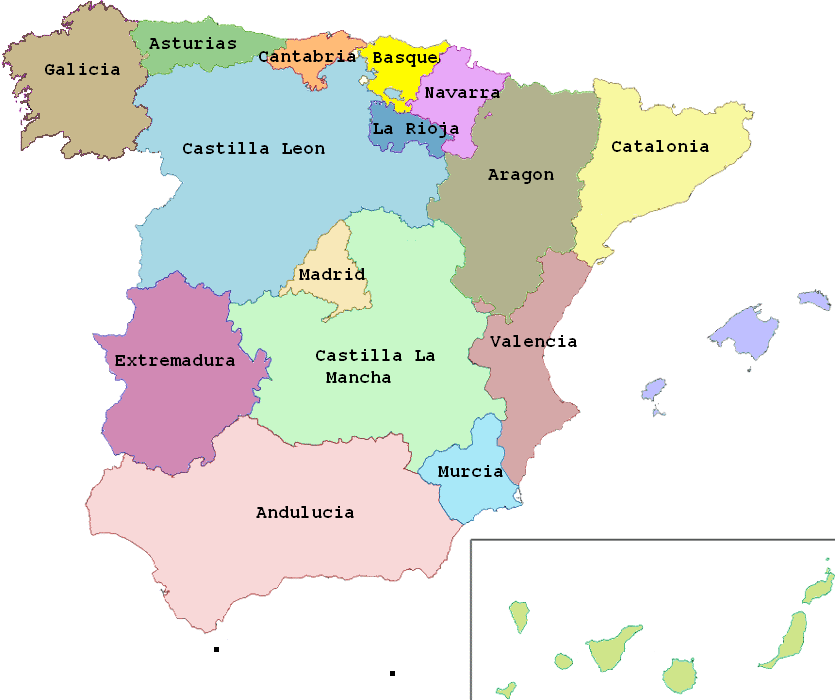|
Azilian
The Azilian is a Mesolithic archaeological industry, industry of the Franco-Cantabrian region of northern Spain and Southern France. It dates approximately 10,000–12,500 years ago. Diagnostic Cultural artifact, artifacts from the culture include projectile points (microliths with rounded retouched backs), crude flat bone harpoons and pebbles with abstract decoration. The latter were first found in the River Arize at the type-site for the culture, the ''Mas d'Azil cave, Grotte du Mas d'Azil'' at Le Mas-d'Azil in the French Pyrenees (illustrated, now with a modern road running through it). These are the main type of Azilian art, showing a great reduction in scale and complexity from the Magdalenian Art of the Upper Palaeolithic. The industry can be classified as part of the Epipaleolithic or the Mesolithic periods, or of both. Archaeologists think the Azilian represents the tail end of the Magdalenian as the warming climate brought about changes in human behaviour in the area. The ... [...More Info...] [...Related Items...] OR: [Wikipedia] [Google] [Baidu] |
Epipaleolithic
In archaeology, the Epipalaeolithic or Epipaleolithic (sometimes Epi-paleolithic etc.) is a period occurring between the Upper Paleolithic and Neolithic during the Stone Age. Mesolithic also falls between these two periods, and the two are sometimes confused or used as synonyms. More often, they are distinct, referring to approximately the same period of time in different geographic areas. Epipaleolithic always includes Epipalaeolithic Near East, this period in the Levant and, often, the rest of the Near East. It sometimes includes parts of Southeast Europe, where Mesolithic is much more commonly used. Mesolithic very rarely includes the Levant or the Near East; in Europe, Epipalaeolithic is used, though not very often, to refer to the early Mesolithic. The Epipalaeolithic has been defined as the "final Upper Palaeolithic industries occurring at the end of the final Last glacial period, glaciation which appear to merge technologically into the Mesolithic". The period is general ... [...More Info...] [...Related Items...] OR: [Wikipedia] [Google] [Baidu] |
Mas D'Azil Cave
The Mas d'Azil cave ( French: ''Grotte du Mas-d'Azil'') is a cave located in the French commune of Mas-d'Azil, in the department of Ariège in Occitania. The cave was occupied during various prehistoric periods and gave its name to a Mesolithic industry, the Azilian. It is also one of the few caves in the world that can be crossed by car. Location The cave is located on the right bank of the Arize river and is 1 km south of the village of Mas-d'Azil, in the western part of the Ariège department. Saint-Girons (the department's subprefecture) is 25 km to the south-west and Foix (the prefecture) is 30 km to the south-east. Prehistory Occupation Multiple prehistoric groups settled in the cave. The remains include the ''Faon aux oiseaux'' ''(''Fawn with Birds), a spear thrower dated to the Middle Magdalenian (15,000 to 13,500 years BP), the ''Coco des roseaux'', a Magdalenian hunting scene with a rudimentary human figure, engraved on a fragment of an animal shoulder bl ... [...More Info...] [...Related Items...] OR: [Wikipedia] [Google] [Baidu] |
Mesolithic
The Mesolithic (Ancient Greek language, Greek: μέσος, ''mesos'' 'middle' + λίθος, ''lithos'' 'stone') or Middle Stone Age is the Old World archaeological period between the Upper Paleolithic and the Neolithic. The term Epipaleolithic is often used synonymously, especially for outside northern Europe, and for the corresponding period in Epipaleolithic Near East, the Levant and Epipaleolithic Caucasus, Caucasus. The Mesolithic has different time spans in different parts of Eurasia. It refers to the final period of hunter-gatherer cultures in Europe and the Middle East, between the end of the Last Glacial Maximum and the Neolithic Revolution. In Europe it spans roughly 15,000 to 5,000 Before Present, BP; in the Middle East (the Epipalaeolithic Near East) roughly 20,000 to 10,000 Before Present, BP. The term is less used of areas farther east, and not at all beyond Eurasia and North Africa. The type of culture associated with the Mesolithic varies between areas, b ... [...More Info...] [...Related Items...] OR: [Wikipedia] [Google] [Baidu] |
Édouard Piette
Édouard Louis Stanislas Piette (11 March 1827, Aubigny-les-Pothées – 5 June 1906, Rumigny) was a French archaeologist and prehistorian. Biography A magistrate by vocation, at around the age of 28 he developed an interest in geology. He studied the limestone formations of northeastern France and its fossils, and through this research he subsequently made the acquaintance of paleontologist Édouard Lartet and other scientists. During a stay at the Bagnères-de-Luchon spa in the central Pyrenees, he became interested in the glacial geology of the area and the contents of its numerous caves. During the 1880s and 1890s he performed archaeological work at various Paleolithic and Mesolithic sites in southwestern France. From his excavatory findings at Mas-d'Azil in 1887, he introduced the " Azilian culture" to bridge the space between the local Paleolithic and Mesolithic phases. Also, he proposed a subdivision of the French Paleolithic into the Amygdalithic, Niphetic and Glyptic ... [...More Info...] [...Related Items...] OR: [Wikipedia] [Google] [Baidu] |
Franco-Cantabrian Region
The Franco-Cantabrian region (also ''Franco-Cantabric region'') is a term applied in archaeology and history to refer to an area that stretches from Asturias, in northern Spain, to Aquitaine and Provence in Southern France. It includes the southern half of France and the northern strip of Spain looking at the Bay of Biscay (known as Cantabrian Sea in Spanish, hence the name). This region shows intense homogeneity in the prehistorical record and possibly was the region of Europe with the densest population of humans during the Late Paleolithic. Vasco-Cantabria is part of the region, on the northern coast of Spain, covering similar areas to the adjacent modern regions of the Basque country and Cantabria. Archaeology Successively, the region experienced the Chatelperronian, Aurignacian, Gravettian, Solutrean, Magdalenian, Azilian, and post Azilian geometric cultures, with their respective cultural expressions, noticeably the most famous mural art. Solutrean, Magdalenian, and ... [...More Info...] [...Related Items...] OR: [Wikipedia] [Google] [Baidu] |
Magdalenian
Magdalenian cultures (also Madelenian; ) are later cultures of the Upper Paleolithic and Mesolithic in western Europe. They date from around 17,000 to 12,000 years before present. It is named after the type site of Abri de la Madeleine, a rock shelter () located in the Vézère valley of Tursac in Dordogne, France. Édouard Lartet and Henry Christy originally termed the period ''L'âge du renne'' "the age of the reindeer". They conducted the first archaeological excavation of the type site, publishing in 1875. The Magdalenian is associated with reindeer hunters. Magdalenian sites contain extensive evidence for the hunting of red deer, wild horses, and other megafauna present in Europe toward the end of the Last Glacial Period. The culture was geographically widespread, and later Magdalenian sites stretched from Portugal in the west to Poland in the east, and as far north as France, the Channel Islands, England, and Wales. Besides la Madeleine, the chief stations of the Ma ... [...More Info...] [...Related Items...] OR: [Wikipedia] [Google] [Baidu] |
Le Mas-d'Azil
Le Mas-d'Azil (; ) is a Communes of France, commune in the Ariège (department), Ariège Departments of France, department in southwestern France, containing a cave that is the typesite for the prehistoric Azilian culture. The ''Mas d'Azil cave, Grotte du Mas d'Azil'' (sometimes hyphenated, sometimes not) is a "supersite" with rich remains of human usage from about 30,000 years ago, and is also a key site for the preceding Magdalenian culture. The D119 road runs right through the large cave, which is a natural tunnel 420 metres long and 50 metres high.; Population See also * Communes of the Ariège department References Communes of Ariège (department) Archaeological sites in France Azilian Ariège communes articles needing translation from French Wikipedia {{Ariège-geo-stub ... [...More Info...] [...Related Items...] OR: [Wikipedia] [Google] [Baidu] |
Vasco-Cantabria
Vasco-Cantabria, in archaeology and the environmental sciences, is an area on the northern coast of Spain. It covers similar areas to the northern parts of the adjacent modern regions of the Basque country and Cantabria. In geology the "Vasco-Cantabrian Basin" or "Basque-Cantabrian Basin" covers the area and the seas off the coast in the Bay of Biscay, an area between the Iberian and European tectonic plates. The area is of special significance in the archaeology of the Upper Palaeolithic, Epipalaeolithic and Mesolithic periods of the Stone Age. A narrow coastal strip was a glacial refugium, never covered by glaciers during the Last Glacial Maximum, and appears to have been densely populated. It is part of the wider Franco-Cantabrian region (also ''Franco-Cantabric region'') that stretches from Asturias, the next region west of Cantabria, to Provence in southeastern France. The main archaeological industries in the area during this period are the Middle Paleolithic Mousteri ... [...More Info...] [...Related Items...] OR: [Wikipedia] [Google] [Baidu] |
Harpoon
A harpoon is a long, spear-like projectile used in fishing, whaling, sealing, and other hunting to shoot, kill, and capture large fish or marine mammals such as seals, sea cows, and whales. It impales the target and secures it with barb or toggling claws, allowing the fishermen or hunters to use an attached rope or chain to pull and retrieve the animal. A harpoon can also be used as a ranged weapon against other watercraft in naval warfare. Certain harpoons are made with different builds to perform better with the type of target. For example, the Inuit have short, fixed-foreshaft harpoons for hunting at breathing holes, while loose-shafted ones are made for throwing and remaining attached to the game. History In the 1990s, harpoon points, known as the Semliki harpoons or the Katanda harpoons, were found in the Katanda region in Zaire. As the earliest known harpoons, these weapons were made and used 90,000 years ago, most likely to spear catfishes. Later, in Japan, sp ... [...More Info...] [...Related Items...] OR: [Wikipedia] [Google] [Baidu] |
Sauveterrian
The Sauveterrian is the name for an archaeological culture of the European Mesolithic which flourished around 8500 to 6500 years BP. The name is derived from the type site of Sauveterre-la-Lémance in the French of Lot-et-Garonne. It extended through large parts of western and central Europe. Characteristic artefacts include geometric microliths and backed points on micro-blades. Woodworking tools are notably missing from Sauveterrian assemblages. There is evidence for ritual burial. References See also *Tardenoisian The Tardenoisian (or Beuronian) is an archaeological culture of the Mesolithic/Epipaleolithic period from northern France and Belgium. Similar cultures are known further east in central Europe, parts of Britain. and west across Spain. It is nam ... {{Authority control Archaeological cultures of Europe Mesolithic cultures of Europe Archaeological cultures in France 7th-millennium BC establishments ... [...More Info...] [...Related Items...] OR: [Wikipedia] [Google] [Baidu] |
Henry Fairfield Osborn
Henry Fairfield Osborn, Sr. (August 8, 1857 – November 6, 1935) was an American paleontologist, geologist and eugenics advocate. He was professor of anatomy at Columbia University, president of the American Museum of Natural History for 25 years and a cofounder of the American Eugenics Society. Among his significant contributions include naming the dinosaurs ''Tyrannosaurus'' and ''Velociraptor'', his widely used system of names for dental cusps of mammalian teeth, as well as his research on fossil proboscideans (elephants and their extinct relatives). Osborn was one of the most well known scientists in the United States during his own lifetime, “second only to Albert Einstein", and was a prominent public advocate for the existence of evolution. Active during the eclipse of Darwinism, Osborn was a prominent opponent of natural selection as a mechanism of evolution, favouring the now discredited orthogenesis theory of which he was one of the most prominent advocates. In a ... [...More Info...] [...Related Items...] OR: [Wikipedia] [Google] [Baidu] |







